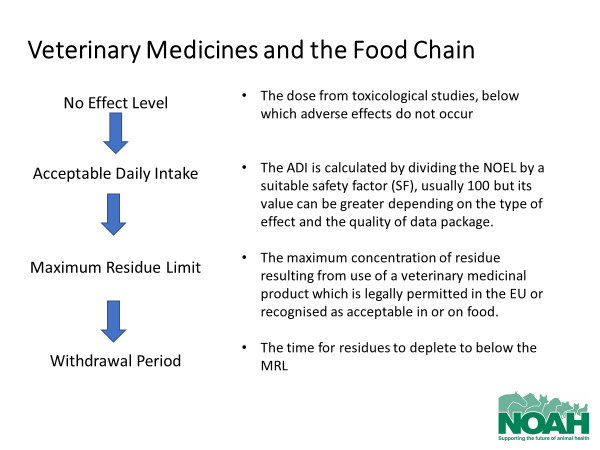This topic takes on average 55 minutes to read.
There are a number of interactive features in this resource:
 Science
Science
 Biology
Biology
Farmers have a responsibility towards the animals in their care, and just as with humans, vaccines are used to keep these animals in good health and antimicrobials are used to treat bacterial infections should they become sick.
Antimicrobials are medicines which treat infections by bacteria, viruses, fungi, or parasites. These are prescribed by vets to treat sick animals, to prevent infection when another animal is sick, or to prevent from parasitic infection. Antibacterials are used to treat bacterial infections, antivirals treat viral infections, and antifungals treat fungal infections.
The use of all medicines, including antimicrobials, in animals is controlled and regulated in the UK by the Veterinary Medicines Directorate (VMD). This is a government organisation that ensures: only authorised medicines are prescribed, that they are being used correctly, and that food of animal origin is safe for people to eat.
Before a veterinary medicine can be marketed and sold to vets and animal owners, the independent regulatory authorities carry out an assessment of the product under 3 key headings - safety, quality, and efficacy. Stringent safety criteria are imposed during the evaluation of the medicine. Safety aspects of a medicine include its safety in animals; in those individuals administering the veterinary medicine e.g. farmers, pet owners, vets; and safety in the environment. In the case of farm animals, the safety assessment also means it will be safe for consumers to eat animal products e.g. meat, milk, eggs, or honey from treated animals.
For farm animal medicines there has to be a Maximum Residue Limit (MRL) for the active ingredient (the highest level of residue that does not pose a risk to the consumer) and set withdrawal periods – the time that must elapse since the last treatment before the animal or its products can enter the food chain, which ensures any remaining residues are below the MRL. Large additional safety factors are also applied during the establishment of the withdrawal period to ensure consumer safety.
The independent regulatory authorities also oversee a programme that checks and monitors the levels of veterinary medicines residues in foodstuffs. The MRL is the maximum concentration of residue accepted by the European Union (EU) in a food product (e.g. meat, milk, eggs) obtained from an animal that has received a veterinary medicine 1.
In the process of establishing an MRL, firstly a No Observed (Adverse) Effect Level (NO(A)EL) is identified through scientific studies with the active substance. The NO(A)EL is the highest dose that does not cause adverse effects. This figure is then divided by an ‘uncertainty’ or ‘safety factor’ e.g. by 100-1000 to determine the Acceptable Daily Intake (ADI). The ADI is the amount of the residue that is considered safe for an individual to eat every day for their lifetime considering several safety factors. The MRLs are such that consumers can ingest generous amounts of animal foodstuffs every day without exceeding the ADI. Several factors are taken into consideration here including the amounts of each food eaten per day and how the substance is metabolised and distributed in the various tissues. An MRL is then set for each edible tissue and product to ensure the ADI is not exceeded.

The withdrawal period is a specific set period, after the last dose of the veterinary medicine has been administered, that must elapse before an animal or foodstuffs from an animal can enter the food chain. To determine the withdrawal period, regulatory authorities must employ a scientific process that includes establishing the Maximum Residue Limit (MRL) for that medicine.
Veterinary medicines residues are molecules (e.g. fragments or remnants of a medicine used to treat an infection) that remain in meat or animal products after the animal has been treated and its produce subsequently enters the food chain. The level of veterinary medicines residues in foodstuffs are monitored and checked on an ongoing basis. These monitoring programmes ensure that residues do not pose a risk to human health via the food chain. At all times, the farmer must by law observe the ‘withdrawal period’ as referred to above, whereby the animal or any of its products is prevented from entering the food chain for a certain period of time after a medicine is given.
A key message that responsible use initiatives give to vets and farmers is that Antimicrobials should be used in animals ‘as little as possible, but as much as necessary’ to strike a balance between protecting animal health and controlling antimicrobial resistance2. It must not be forgotten that it is a legal requirement for animal owners to ensure that their animals (whether farmed or pets) receive proper veterinary treatment if they are sick. Veterinary medicinal products including veterinary authorised antibiotics play an essential role in maintaining animal health and welfare and ensuring the societal need to look after animal’s welfare needs are met.
Infected animals that are treated with antimicrobials have the potential to lead to resistant microorganisms in the environment if proper practices are not followed by the farmer or pet owner. Examples of failure to follow proper practices include not finishing the course of antibiotics or using medicines not prescribed by a vet.
As a result of this interconnectedness between animal diseases and human health, emerging infectious diseases and the spread of antimicrobial resistance is a One Health issue, and will be tackled best by connecting across different professions including vets, farmers, doctors and the food retail sector.